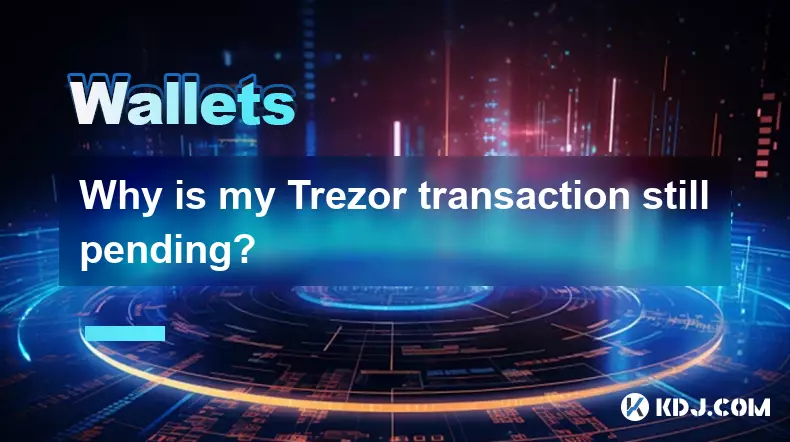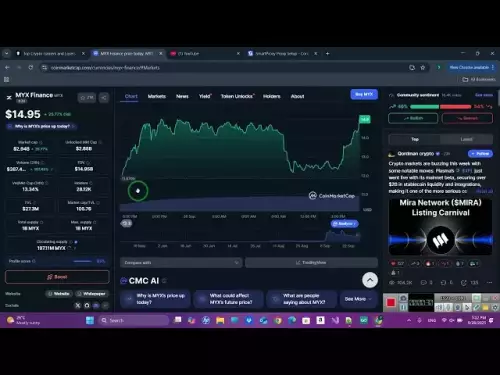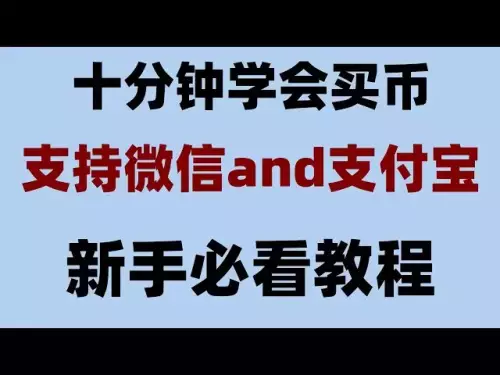-
 bitcoin
bitcoin $109547.008142 USD
0.04% -
 ethereum
ethereum $4011.838726 USD
-0.05% -
 tether
tether $1.000402 USD
-0.01% -
 xrp
xrp $2.798606 USD
0.88% -
 bnb
bnb $970.877944 USD
1.39% -
 solana
solana $202.237275 USD
-0.95% -
 usd-coin
usd-coin $0.999673 USD
0.00% -
 dogecoin
dogecoin $0.229294 USD
-1.15% -
 tron
tron $0.336370 USD
-0.45% -
 cardano
cardano $0.777260 USD
-1.66% -
 hyperliquid
hyperliquid $45.503019 USD
1.73% -
 ethena-usde
ethena-usde $1.000362 USD
0.01% -
 chainlink
chainlink $20.785303 USD
-1.10% -
 avalanche
avalanche $28.755822 USD
-0.11% -
 stellar
stellar $0.358303 USD
-0.48%
Why is my Trezor transaction still pending?
A pending Trezor transaction means it's broadcast but unconfirmed; check the TXID on a blockchain explorer and consider increasing fees via RBF or double-spending if stuck.
Sep 17, 2025 at 03:18 pm

Understanding Pending Transactions in Trezor Wallets
1. A pending transaction in a Trezor wallet typically indicates that the transaction has been broadcast to the blockchain network but has not yet been confirmed by miners. This status can last from a few seconds to several hours, depending on various factors such as network congestion and transaction fees.
2. The Bitcoin and Ethereum networks process transactions based on fee priority. When thousands of transactions flood the mempool, those with higher fees are processed first. If your transaction includes a low fee, it may remain unconfirmed for an extended period.
3. Trezor devices themselves do not control confirmation times. They only sign and broadcast transactions. Once signed, the transaction enters the public mempool, where miners decide when to include it in a block.
4. Users sometimes mistakenly believe their transaction failed because it remains pending. In reality, the transaction is still valid and may eventually confirm once network load decreases or if a fee bumping method is applied.
5. It’s essential to verify whether the transaction ID (TXID) exists on a blockchain explorer. If the TXID appears in the mempool, the transaction is active and waiting for confirmation rather than being lost or rejected.
Common Causes of Delays in Transaction Confirmation
1. Low transaction fees are the most frequent reason for delays. Miners prioritize transactions offering higher fees per byte or per gas unit. Choosing the default or economy fee option during periods of high demand often results in prolonged wait times.
2. Network congestion plays a major role, especially during spikes in activity on Bitcoin or Ethereum. Events like NFT mints, exchange withdrawals, or market crashes increase traffic, causing backlogs in confirmation queues.
3. Some wallets or services generate transactions without Replace-By-Fee (RBF) enabled, which prevents users from increasing the fee later. Without RBF, the only options are to wait or attempt a double-spend with a higher fee.
4. Mempool limits at nodes can cause older, low-fee transactions to be dropped after a certain time. However, if rebroadcasted, they can reappear, prolonging uncertainty about their status.
5. Incorrect settings in the connected wallet interface—such as using an outdated fee estimation algorithm—can lead to suboptimal fee selection, contributing directly to confirmation delays.
Solutions to Resolve a Stuck Trezor Transaction
1. Check the transaction status using a blockchain explorer like blockchair.com or etherscan.io. Enter your wallet address or TXID to see if the transaction is listed in the mempool and how many confirmations it has received.
2. Enable Replace-by-Fee (RBF) if supported by your wallet software. This allows you to resend the same transaction with a higher fee, effectively replacing the original one in the mempool.
3. If RBF is not available, create a new transaction using Coin Control features and spend the same inputs with a significantly higher fee. This technique, known as “double-spending with higher fees,” can invalidate the pending transaction once the new one confirms.
4. Some advanced users utilize Child-Pays-For-Parent (CPFP) strategies by sending a subsequent transaction from the change output with a high fee, incentivizing miners to clear both transactions together.
5. Wait patiently during peak congestion. Most low-fee transactions eventually confirm, though this could take days during extreme network loads. Avoid resubmitting the same transaction repeatedly, as this clutters the mempool.
Preventive Measures for Future Transactions
1. Always review current network conditions before sending funds. Use real-time fee trackers like mempool.space or ETH Gas Station to estimate optimal fee rates for timely confirmations.
2. Choose wallet software that integrates dynamic fee suggestions based on mempool activity. Applications like Electrum, Blockstream Green, or Trezor Suite offer adjustable fee sliders with time-based estimates.
3. Consider enabling RBF by default in compatible wallets. This provides flexibility to increase fees later if needed, reducing the risk of indefinite pending states.
4. For urgent transfers, manually set a higher fee even if it increases cost. Fast confirmation often justifies the extra expense, particularly when interacting with time-sensitive DeFi protocols or exchanges.
5. Regularly update your Trezor firmware and associated wallet applications. Updates frequently include improvements in fee calculation, mempool monitoring, and user alerts for stuck transactions.
Frequently Asked Questions
Can I cancel a pending transaction from my Trezor? No, you cannot directly cancel a transaction once it has been broadcast. However, you can either replace it using RBF (if enabled) or issue a conflicting transaction with a higher fee to override it.
Why does my transaction show zero confirmations for hours? This occurs when the attached fee is too low compared to other transactions competing for block space. Miners delay processing low-fee transactions until network demand drops or fees rise.
Does restarting my Trezor device help speed up a pending transaction? Restarting the device has no effect on a pending transaction. Confirmation depends solely on the blockchain network and miner behavior, not the hardware wallet's operational state.
Will my funds be lost if a transaction stays pending? Funds are not lost. They remain locked in the unconfirmed transaction. Once confirmed or invalidated, they either move to the recipient or return to your wallet as spendable balance.
Disclaimer:info@kdj.com
The information provided is not trading advice. kdj.com does not assume any responsibility for any investments made based on the information provided in this article. Cryptocurrencies are highly volatile and it is highly recommended that you invest with caution after thorough research!
If you believe that the content used on this website infringes your copyright, please contact us immediately (info@kdj.com) and we will delete it promptly.
- Digital Asset Treasuries, M&A, and the Crypto Berkshire Hathaway: A New Era
- 2025-09-29 02:25:14
- PEPE Price Prediction: Meme Coin Mania or Fading Fad?
- 2025-09-29 03:05:13
- HBAR, Crypto, Buy Now: Decoding the Hype and Finding the Real Gems
- 2025-09-29 03:05:13
- DeepSnitch AI: Your Crypto Fortune Teller for 2025?
- 2025-09-29 02:25:14
- Investors, Ethereum, and Citigroup: Navigating the Crypto Landscape in 2025
- 2025-09-29 03:18:09
- BlockchainFX, Dogecoin, and Crypto Coins: A New York Minute on the Future
- 2025-09-29 02:30:01
Related knowledge

How do I view smart contract interaction history in Coinbase Wallet?
Sep 24,2025 at 01:36am
Accessing Smart Contract Interaction History in Coinbase Wallet1. Open the Coinbase Wallet application on your mobile device and log in using your cre...

How do I use the token swap feature in Coinbase Wallet?
Sep 24,2025 at 05:00pm
Understanding Token Swaps in Coinbase Wallet1. The token swap feature in Coinbase Wallet enables users to exchange one cryptocurrency for another dire...

How do I participate in governance voting in Coinbase Wallet?
Sep 25,2025 at 01:55pm
Understanding Market Volatility in the Crypto Space1. Cryptocurrency markets are known for their extreme price fluctuations, often driven by sentiment...

How do I set up a custom RPC node in Coinbase Wallet?
Sep 24,2025 at 12:00pm
Understanding Custom RPC Nodes in Coinbase Wallet1. A custom RPC (Remote Procedure Call) node allows users to connect their Coinbase Wallet to a block...

How do I manage multiple assets in Coinbase Wallet?
Sep 23,2025 at 10:00am
Understanding Multi-Asset Support in Coinbase Wallet1. Coinbase Wallet allows users to store a wide variety of digital assets beyond just Bitcoin and ...

How do I connect Coinbase Wallet to a hardware wallet?
Sep 26,2025 at 02:54am
Connecting Coinbase Wallet to a Hardware Device1. Open the Coinbase Wallet app on your mobile device and ensure it is updated to the latest version. N...

How do I view smart contract interaction history in Coinbase Wallet?
Sep 24,2025 at 01:36am
Accessing Smart Contract Interaction History in Coinbase Wallet1. Open the Coinbase Wallet application on your mobile device and log in using your cre...

How do I use the token swap feature in Coinbase Wallet?
Sep 24,2025 at 05:00pm
Understanding Token Swaps in Coinbase Wallet1. The token swap feature in Coinbase Wallet enables users to exchange one cryptocurrency for another dire...

How do I participate in governance voting in Coinbase Wallet?
Sep 25,2025 at 01:55pm
Understanding Market Volatility in the Crypto Space1. Cryptocurrency markets are known for their extreme price fluctuations, often driven by sentiment...

How do I set up a custom RPC node in Coinbase Wallet?
Sep 24,2025 at 12:00pm
Understanding Custom RPC Nodes in Coinbase Wallet1. A custom RPC (Remote Procedure Call) node allows users to connect their Coinbase Wallet to a block...

How do I manage multiple assets in Coinbase Wallet?
Sep 23,2025 at 10:00am
Understanding Multi-Asset Support in Coinbase Wallet1. Coinbase Wallet allows users to store a wide variety of digital assets beyond just Bitcoin and ...

How do I connect Coinbase Wallet to a hardware wallet?
Sep 26,2025 at 02:54am
Connecting Coinbase Wallet to a Hardware Device1. Open the Coinbase Wallet app on your mobile device and ensure it is updated to the latest version. N...
See all articles









































































